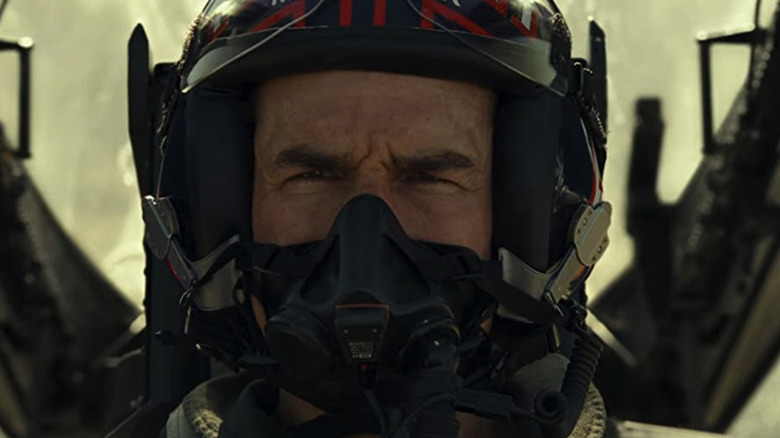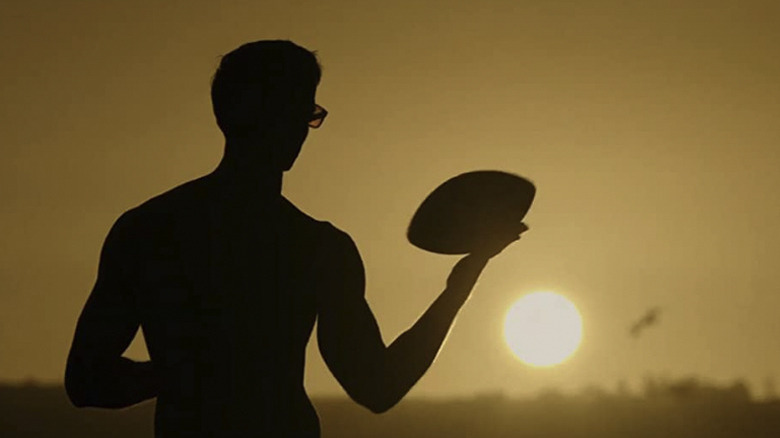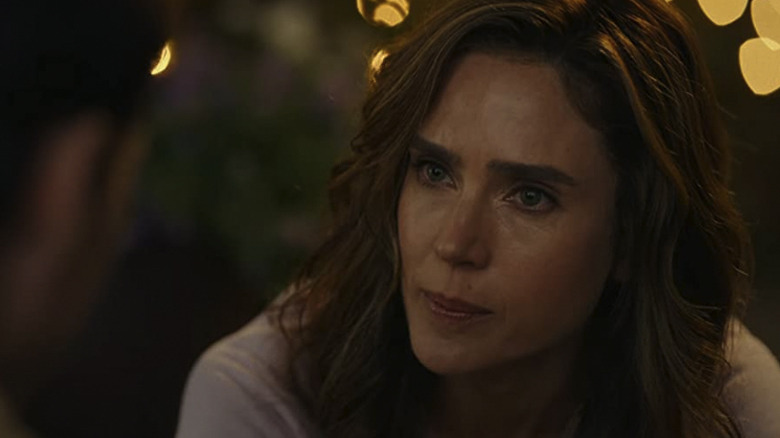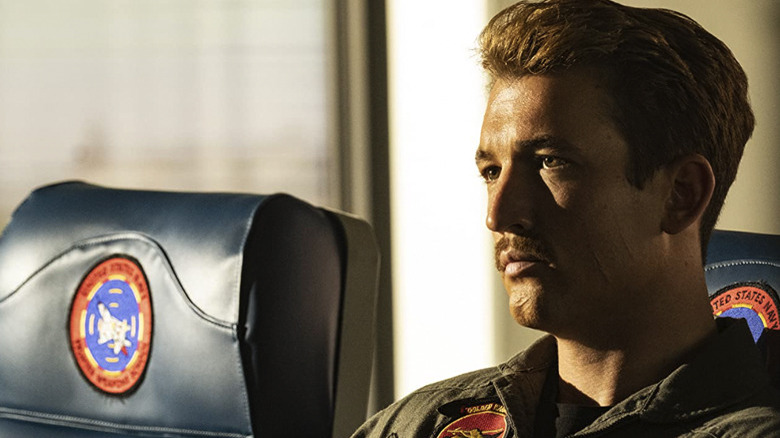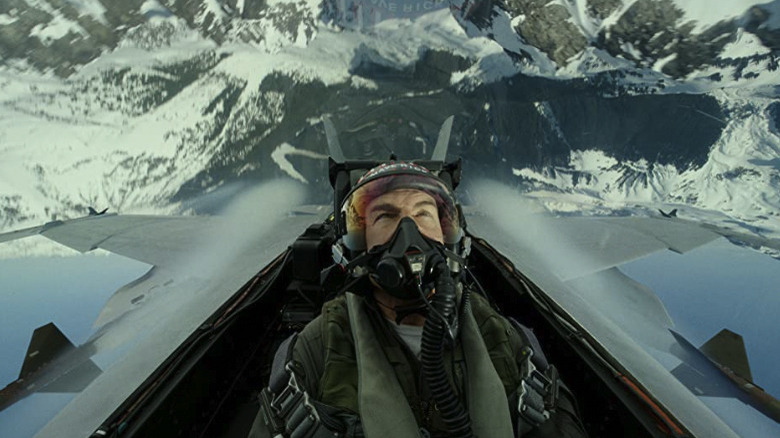Top Gun: Maverick Review: Tom Cruise Takes Audiences On A Satisfying Trip Back To The Danger Zone
"Top Gun" fans have been waiting more than three decades to see a sequel to the high-flying 1980s action classic, and after years of rumors, development, and several Covid-related delays, "Top Gun: Maverick" is finally here — and it was worth the wait. Like the sleek fighter jets in the film, this movie feels engineered from the ground up for maximum efficiency. But just because it can sometimes feel like you're riding a well-designed roller coaster, that doesn't mean the thrills aren't real. The story is extremely predictable, but it still manages to be one of the most rousing movies of the year thanks to a killer movie star performance from Tom Cruise and some absolutely jaw-dropping aerial action that you have to see to believe. In short, this sequel delivers everything fans have been waiting for.
Thirty years after the events of the original film, Pete "Maverick" Mitchell (Cruise) is working as a test pilot for the Navy, pushing the next generation of planes to their limits above the Mojave Desert. But when he pisses off a hard-nosed admiral (Ed Harris) by pushing a jet a bit too far, it looks like Maverick is about to be grounded for good. Just in the nick of time, though, he receives orders from his former rival/wingman Tom "Iceman" Kazansky (Val Kilmer), now an admiral himself, to report to the Top Gun fighter pilot school and call upon his experiences from the first movie to train an elite squad of recent graduates for a dangerous new mission. One of those recent graduates is Bradley "Rooster" Bradshaw (Miles Teller), the son of Maverick's former flying partner, Goose, who died in the original film. Rooster and Maverick have a complicated history — something Rooster's rival, the cocky "Hangman" (Glen Powell), quickly clocks and tries to use to his advantage.
Finding comfort in the familiar
Structurally, this movie is almost exactly the same as the first film: A bunch of talented pilots spends the majority of "Maverick" participating in training exercises, jockeying for power and position, and acquiring the skills they'll need later. The biggest difference is the final mission. In the original, Iceman and Maverick literally get called into action at their graduation ceremony for a mission they didn't know was coming. Here, the mission hangs over the entire movie — everyone knows exactly what is expected of them, and just how impossible it seems. The objective is to destroy a highly guarded, unsanctioned uranium plant before it becomes operational. The pilots must enter enemy airspace, traverse a lengthy canyon flying at a maximum height of 100 feet to avoid appearing on radar, and use missiles to basically pull a "Star Wars" by blowing up a ventilation hatch to an underground bunker and then blasting the plant to smithereens before anyone knows they were even there.
"Top Gun: Maverick" writers Ehren Kruger, Eric Warren Singer, and Christopher McQuarrie lay this all out like a heist movie, complete with detailed visual breakdowns of the canyon and a practice course that mimics the exact layout. Watching the pilots try again and again to complete this course is one of the oldest tricks in the storytelling book, building suspense and showcasing just how tough this mission's parameters really are. Ultimately, though, you know where this is all heading: If you think Maverick is going to be sitting on the sidelines as a teacher for the whole film, you probably haven't seen a Tom Cruise movie since the original "Top Gun."
Speaking of the original, this sequel's general structure isn't the only way it tries to ape the vibe of the first movie. The opening credits sequence is a modern updating of the memorable intro to the '86 film, with lovingly fetishistic shots of jets preparing for take-off on an aircraft carrier runway and Harold Faltermeyer's epic instrumental theme song grooving in the background. For those who haven't seen the original in a while, it may seem as if this is a shot-for-shot recreation of that sequence. But directors Joseph Kosinski and Tony Scott have very different ideas about the stylistic details of a movie like this. Scott, who was long attached to return to direct a sequel before he died in 2012, drenched his opening sequence in an unreal smoky yellow color, almost as if it were a scene out of "Apocalypse Now." The original "Top Gun" is full of silhouettes and heightened colors to stylize the drama — characters were frequently bathed in purples and reds and neons, and they were soaked in sweat in cockpits or control rooms alike. Kosinski, on the other hand, is more beholden to realism — his is a movie of deep blacks, technology-tinted greens, and dull grays, and he's more interested in capturing clean lines and sleek visuals than heightening situations with flashy colors. This cleaner and more uniform approach fits the precision of the action scenes but leaves the rest of "Top Gun: Maverick" feeling a little sterile by comparison.
The women of the Top Gun franchise
There's also a nagging sense that this sequel hung the women from the original out to dry. While there are plenty of callbacks to the first movie, it's unfortunate that Meg Ryan, who brought a firecracker energy and a soulful sadness to the role of Goose's wife in the first movie, doesn't appear here. A decision made by her character before this film began looms over the relationship between Maverick and Rooster like a specter, and one can easily imagine how this film could have been a big moment for the actress if she were in it. Perhaps she was asked and rejected the opportunity; in 2019, she told The New York Times she was turning down movie roles, so it's possible she just wasn't interested.
It's a bit harder to swallow, however, that Kelly McGillis, who played Maverick's love interest and civilian instructor Charlie in the first movie, is not mentioned and only appears briefly in recycled footage from the '86 film during a flashback reverie. McGillis says she was not invited to reprise her role in "Top Gun: Maverick," and to some extent, I get it: This movie showcases a different era of Maverick's life, so the idea of shoehorning an ex-girlfriend into the story might not make the most sense. Still, it's just a bit of a bummer that the two significant female characters from the original movie don't have a place in this sequel.
But while the women who actually appeared in "Top Gun" were left on the sidelines this time, one who was only mentioned actually appears here in the flesh. Jennifer Connelly plays Penny Benjamin, the admiral's daughter at whom Maverick made a pass in his younger days. Penny is now the owner of a San Diego bar called The Hard Deck, which serves as the local haunt for all of the pilots attending the Top Gun school. She's a single mom who has a good relationship with her teenage daughter, and despite Penny having had several romantic entanglements with Maverick over the years ending in heartbreak, the two of them can't seem to stay away from each other. Connelly brings a welcome warmth and a grounded sense of humanity to a cast full of larger-than-life characters; a nice date scene on a sailboat proves she has interests and hobbies all her own, and there's plenty Maverick can learn from her.
The emotional core
"Top Gun: Maverick" frequently tries to tug at the heartstrings, to varying degrees of success. Kilmer, who has had significant health issues over the past several years (as chronicled in the fascinating documentary "Val"), returns as Iceman, and regardless of whether you find his return effective, manipulative, or a combination of both, it's undeniably powerful to see the actor on screen again in this context.
Goose's death hangs over this movie in a big way, through lots of old photos and conversations about how Rooster views what happened, and Maverick still says the phrase "Talk to me, Goose" when he's in the air, which may be enough on its own to cue the waterworks for some viewers. Miles Teller does some of the best work of his career here (despite the fact that his character is written somewhat inconsistently), but while Teller and Powell are both charismatic performers, the Rooster vs. Hangman dynamic, which is set up to be this movie's key rivalry, lacks the depth of the Maverick vs. Iceman clashes from the first movie. The rest of the supporting cast (Monica Barbaro, Lewis Pullman, Greg Tarzan Davis, Jay Ellis, and Danny Ramirez), like the supporting players in the original, aren't really given enough screen time to make a significant impact.
Another satisfying spin on the amusement park ride
But this is an action movie above all else, and I'm pleased to say the film delivers on that front. Paramount has gone out of its way to underscore how much of the flying scenes were filmed for real, in keeping with Cruise's obsession with doing stunts himself that no other American A-list actor would attempt. There are a few moments that look so dangerous that they feel as if they couldn't possibly have been performed by the main cast, but for the most part, the studio's gambit succeeds here: The action feels alive and thrilling and immersive, and Kosinski excels at making sure the geography is clearly laid out and the audience always knows where each jet is in relation to the others. Since a majority of the movie takes place in the air, it's crucial that the dogfights feel spontaneous and fluid, and they do; the climactic mission, in particular, feels exceptionally designed and executed.
For Cruise, this movie is another opportunity to prove to the world that, coming up on his 60th birthday, he's as vital and important to the Hollywood ecosystem as ever. There are on-the-nose exchanges throughout about aging and remaining relevant in an industry that has seemingly passed you by, which alternately elicited smiles and knowing eye rolls from this viewer. As in the first movie, the enemy country in this sequel is never explicitly named, and the film is more interested in its meta exploration of Cruise's current position than in upsetting any international market and hampering its global reach. "Time is your enemy," Maverick explains to the young squadron of pilots, and considering how integral he becomes in the final act, the movie serves as a Maverick-esque act of rebellion against the very concept of time itself, and a celebration of Cruise's continued commitment to risking his life on screen for our entertainment.
Back in '86, the military set up recruitment exhibits outside some theaters to lure in viewers who were swept up by the original movie's action. "Top Gun: Maverick," which was unquestionably made with military support, also makes the fighter pilot action look exceedingly cool, and is essentially another piece of propaganda (albeit one with a slightly different message, which perhaps we'll dig into in a spoiler review later). There will (and should) be discussions in the coming weeks about this movie's politics, and knowing that the original gave so many people a skewed view of the Navy admittedly makes this film feel a little more potentially sinister than a typical blockbuster. But Cruise once referred to the '86 film as "an amusement park ride ... a joy ride [which] shouldn't be looked at beyond that," and for audiences who can watch "Top Gun: Maverick" through that lens and appreciate it as a piece of propulsive action cinema, this could end up being one of the most crowd-pleasing and satisfying movie experiences of the year.
/Film Rating: 8 out of 10
